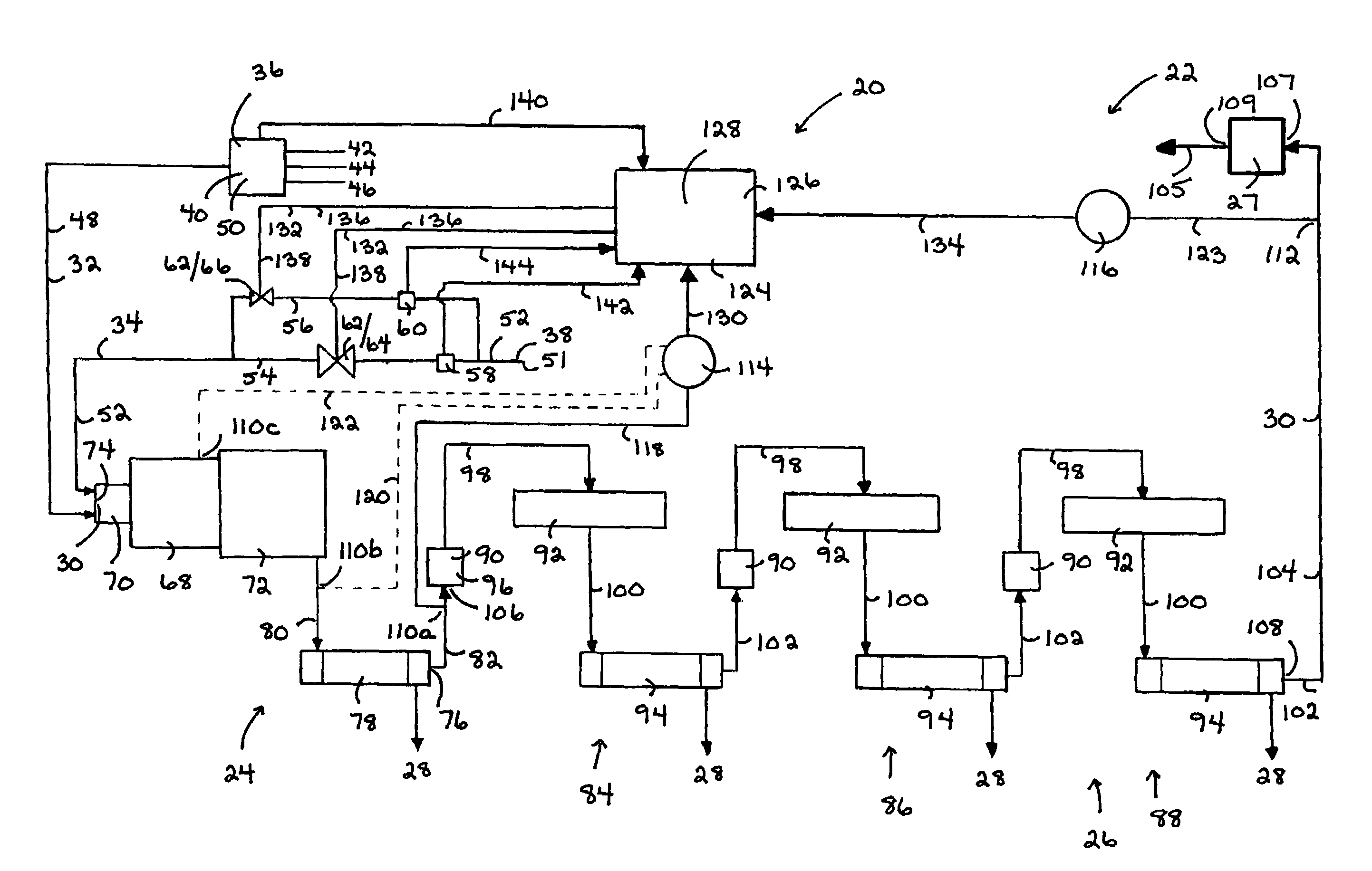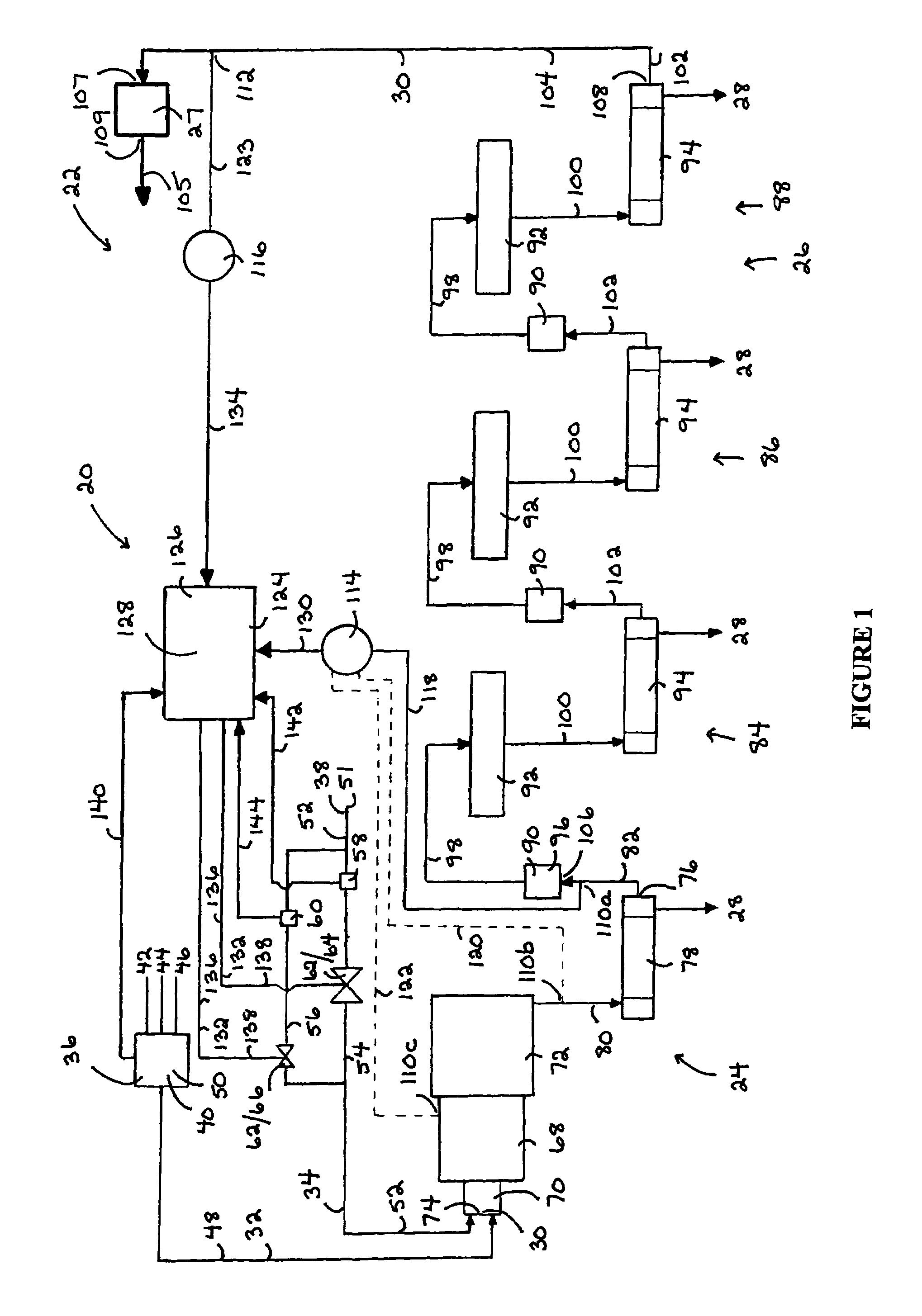Process and system for controlling a process gas stream
a technology of process gas and process flow, applied in separation processes, inorganic chemistry, material testing goods, etc., can solve the problems of affecting altering the ratio from optimal to optimal, and reducing the overall performance or efficiency of the sulfur recovery process. , to achieve the effect of reducing the effect of upset conditions, reducing the duration of the upset effect and the amplitude of the upset
- Summary
- Abstract
- Description
- Claims
- Application Information
AI Technical Summary
Benefits of technology
Problems solved by technology
Method used
Image
Examples
Embodiment Construction
[0082]Referring to FIG. 1, the present invention is directed at a control process and a control system (20) for use in conjunction or association with a sulfur recovery process or sulfur recovery system or unit (22) respectively. Preferably, the sulfur recovery process is comprised of a thermal step and a catalytic step. The sulfur recovery system (22) is preferably comprised of a thermal reaction apparatus (24) for performing the thermal step and a catalytic reaction apparatus (26) for performing the catalytic step. More particularly, in the preferred embodiment of the control process of the present invention, the control process is used in association or conjunction with a Claus sulfur recovery process which comprises the thermal and catalytic steps. Further, in the preferred embodiment of the control system (20) of the present invention, the control system (20) is used in association or conjunction with a Claus sulfur recovery system or unit which comprises the thermal and cataly...
PUM
| Property | Measurement | Unit |
|---|---|---|
| response time | aaaaa | aaaaa |
| composition | aaaaa | aaaaa |
| temperature | aaaaa | aaaaa |
Abstract
Description
Claims
Application Information
 Login to View More
Login to View More - R&D
- Intellectual Property
- Life Sciences
- Materials
- Tech Scout
- Unparalleled Data Quality
- Higher Quality Content
- 60% Fewer Hallucinations
Browse by: Latest US Patents, China's latest patents, Technical Efficacy Thesaurus, Application Domain, Technology Topic, Popular Technical Reports.
© 2025 PatSnap. All rights reserved.Legal|Privacy policy|Modern Slavery Act Transparency Statement|Sitemap|About US| Contact US: help@patsnap.com



